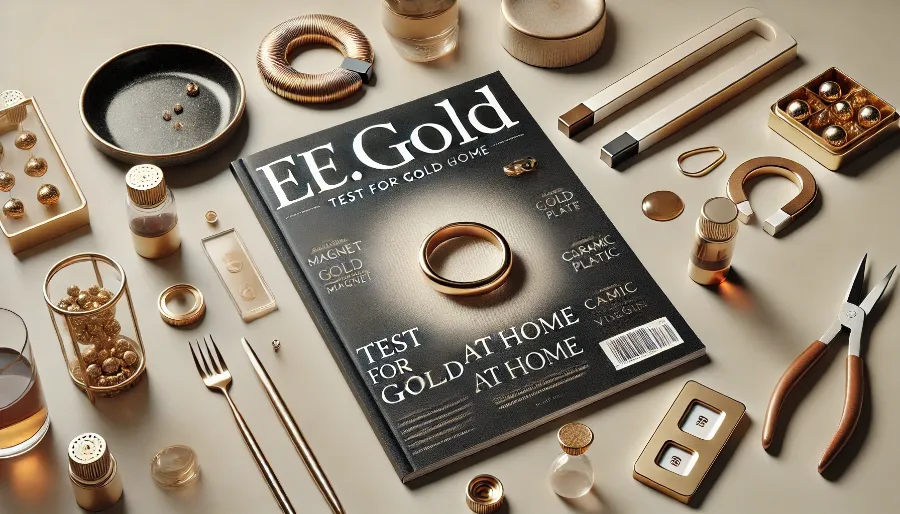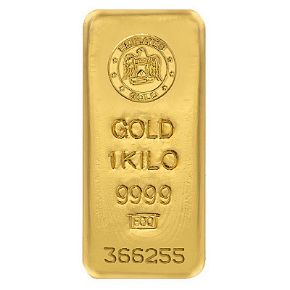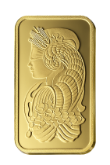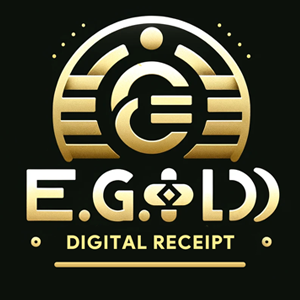
Gold has long been a symbol of wealth and security, but with counterfeit gold becoming increasingly sophisticated, knowing how to test gold at home is essential. Whether you’ve inherited a piece of jewelry or want to verify a recent purchase, performing a DIY gold test can save you time and money while ensuring your investment is genuine. This guide explores several reliable methods for testing gold authenticity at home.
Why Test Gold at Home?
Testing gold at home is a practical way to:
- Verify Authenticity: Determine whether your gold item is genuine or counterfeit.
- Save Money: Avoid the expense of professional testing for everyday items.
- Protect Investments: Ensure that your gold is a safe and secure asset.
While home tests can provide quick insights, it’s important to note that they may not be as accurate as professional methods. However, they’re a great starting point.
What You Need to Know About Gold
Gold is a non-reactive, dense metal that does not corrode or tarnish. These properties make it easy to test for authenticity using specific techniques. Most gold items are made from alloys—mixtures of gold with other metals—to improve durability. Gold purity is measured in karats, with 24 karats being pure gold.
Simple Methods to Test Gold at Home
- The Magnet Test
Gold is non-magnetic, so if your item is attracted to a magnet, it’s likely fake or made from another metal.
- What You Need: A strong magnet.
- How to Test: Hold the magnet near the gold item. If it sticks or moves, the piece likely contains magnetic metals.
- The Float Test
Gold is dense and sinks in water, unlike counterfeit metals that may float or stay suspended.
- What You Need: A glass of water.
- How to Test: Drop the item into the water. Genuine gold will sink immediately to the bottom.
- The Scratch Test
Real gold leaves a gold-colored streak, while other metals leave black or gray marks.
- What You Need: An unglazed ceramic plate or tile.
- How to Test: Gently scratch the gold item on the ceramic surface. Inspect the streak for its color.
- The Vinegar Test
Gold does not react to vinegar, but other metals will discolor or corrode.
- What You Need: White vinegar and a dropper.
- How to Test: Apply a small drop of vinegar to the gold surface. Wait a few minutes and observe for any reaction.
- The Bleach Test
Similar to vinegar, bleach will not affect real gold but can tarnish fake gold or gold-plated items.
- What You Need: Household bleach.
- How to Test: Apply a drop of bleach to an inconspicuous part of the item and observe for changes.
- The Acid Test
Acid testing kits are available for home use and are highly accurate for determining gold purity.
- What You Need: An acid testing kit (available online or in stores).
- How to Test: Follow the instructions provided with the kit to apply acid to the gold item and observe the reaction.
Interpreting Your Results
- No Reaction: If your gold passes all the tests without discoloration or attraction to magnets, it’s likely genuine.
- Reaction to Acid or Chemicals: Tarnishing, corrosion, or discoloration usually indicates fake or gold-plated metal.
Additional Tips for Accurate Testing
Inspect Hallmarks
Look for stamps indicating gold purity, such as “10K,” “14K,” or “24K.” However, counterfeit items may also include fake hallmarks.Use a Jeweler’s Loupe
Examine the gold under magnification to check for uneven edges, discoloration, or peeling, which can indicate gold plating.Weigh the Gold
Use a precision scale to measure the item’s weight. Compare it to the standard weight for similar gold items.Test in Multiple Spots
For larger items, test in several areas to ensure consistency.
When to Seek Professional Testing
While home tests are convenient, professional testing is recommended for:
- High-value items like gold bars or rare jewelry.
- Confirming gold purity beyond home testing methods.
- Certifying gold for resale or investment purposes.
Frequently Asked Questions
Is the vinegar test safe for all gold items?
Yes, vinegar is safe for solid gold but should not be used on gold-plated or antique items to avoid damage.What karat gold reacts to acids?
Pure gold (24K) is resistant to most acids, while lower-karat gold may show minor reactions due to alloy content.Can fake gold pass the magnet test?
Yes, some counterfeit metals like brass or tungsten are non-magnetic and may pass the test.How accurate are home tests for gold?
Home tests provide a preliminary assessment but may not be 100% accurate. For definitive results, consult a professional.Can I use these tests on gold jewelry with gemstones?
Avoid testing areas with gemstones, as some tests may damage them.What should I do if my gold item fails a test?
Seek professional evaluation to confirm the results and determine the item’s authenticity.Are acid testing kits safe for beginners?
Yes, but always follow safety precautions, such as wearing gloves and working in a well-ventilated area.Can I use these methods for gold coins?
Yes, but handle coins carefully to avoid damaging their value or collector’s appeal.What is the easiest test for beginners?
The magnet and float tests are simple and require minimal tools.Where can I buy testing kits?
Testing kits are available online or at jewelry supply stores.
Investing in Authentic Gold
Knowing how to test for gold at home empowers you to protect your assets and avoid scams. Whether you’re verifying jewelry, coins, or bars, these simple methods provide peace of mind and confidence in your investments. Always remember to complement home testing with professional evaluations for high-value items to ensure accuracy and reliability. With these skills, you’re well-equipped to navigate the world of gold ownership!
How to Protect Yourself When Buying Gold
While testing gold at home is a useful skill, avoiding counterfeit gold from the outset is equally important. Here are some tips to protect yourself when buying gold:
Buy from Reputable Dealers
Always purchase gold from established and trustworthy sellers. Reputable dealers provide certifications and guarantees of authenticity, making it easier to verify the item’s legitimacy.Request a Certificate of Authenticity
Most legitimate gold pieces come with a certificate detailing the weight, purity, and origin of the gold. Always ask for this documentation when buying.Inspect Packaging
For gold bars or coins, look for tamper-proof packaging. This not only secures the item but also preserves its value and authenticity.Check Reviews and Ratings
When buying gold online, read customer reviews and check the seller’s ratings to ensure a positive transaction history.Avoid Deals That Seem Too Good to Be True
If an offer seems significantly cheaper than the market price, it’s likely a scam. Research current gold prices to know what to expect.Be Wary of Unverified Gold Stamps
Counterfeiters often use fake hallmarks to deceive buyers. Testing the gold at home or consulting a professional can help confirm authenticity.
Why Gold Purity Matters
Gold purity is a critical factor in determining its value. Pure gold (24 karats) is soft and often alloyed with other metals for strength. Understanding karat levels helps you evaluate the gold’s worth and authenticity.
- 24K Gold: 99.99% pure, ideal for investment but not commonly used in jewelry due to its softness.
- 22K Gold: 91.67% pure, often used in high-quality jewelry.
- 18K Gold: 75% pure, durable and popular for fine jewelry.
- 14K Gold: 58.3% pure, stronger and more affordable for everyday wear.
Knowing these distinctions ensures you make informed decisions when buying or testing gold.
Gold Testing for Collectors
Collectors often require precise methods to authenticate gold coins or rare jewelry. Testing these items at home requires extra care:
Handle Coins Carefully
Use gloves when handling gold coins to avoid leaving fingerprints or damaging their value.Preserve Antique Pieces
Avoid chemical tests on antique gold items, as these may harm their finish or historical integrity. Instead, consult a professional appraiser.Understand Numismatic Value
Gold coins often carry additional value based on rarity and historical significance. Testing for purity alone may not provide a full picture of their worth.
The Role of Professional Testing
While home testing methods are convenient, professional services offer unmatched precision. Professional jewelers and appraisers use advanced tools such as:
- X-Ray Fluorescence (XRF): Analyzes the metal’s composition without damaging the item.
- Fire Assay: A traditional method for determining gold purity with high accuracy.
- Ultrasound Testing: Detects counterfeit gold bars with hidden cores of other metals.
These methods are especially valuable for verifying high-value gold investments.
The Future of Gold Testing
As technology evolves, new methods are being developed to simplify gold testing. For example:
- Blockchain Authentication: Tracking the origin and ownership of gold using blockchain technology.
- Mobile Testing Kits: Compact kits for quick and accurate testing on the go.
- AI-Powered Analysis: Using artificial intelligence to detect counterfeit gold with high accuracy.
These innovations aim to make gold testing more accessible and reliable for everyone.
Final Thoughts: Confidence in Your Gold
Testing for gold at home is an essential skill that empowers you to make informed decisions and avoid counterfeits. With simple tools like magnets, vinegar, or a ceramic plate, you can quickly determine whether your gold is real. While these methods provide a great starting point, professional testing is recommended for high-value items or detailed assessments.
By combining knowledge, reliable testing methods, and cautious buying practices, you can confidently navigate the world of gold ownership. Whether you’re a first-time buyer or a seasoned collector, understanding how to test gold ensures you’re always a step ahead in protecting your investments.
NOTE
This Content is the copyrighted content of EE.GOLD. All rights are reserved. You are welcome to share or use our content only by including direct links to our website. Any other form of reproduction, distribution, or use without proper attribution is strictly prohibited.
This Content is intended solely for educational purposes. The information provided does not constitute financial or investment advice.
Please note that Digital Storage Receipt, Secure Storage Solutions, and Physical Gold Sales are the only services offered by EE.GOLD.
We strictly adhere to government regulations and are firmly against all illegal financial or investment activities globally.
For further inquiries, feel free to contact us through our official channels.










.png)

